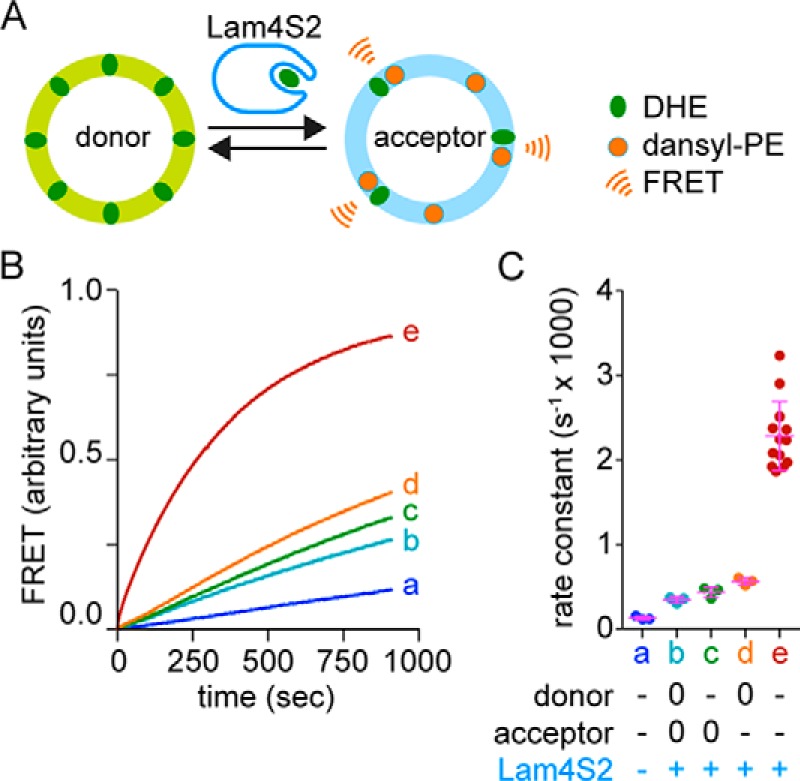Figure 4.

Lam4S2-mediated sterol transport: effect of anionic phospholipids. A, schematic illustration of the sterol transport assay. Donor vesicles containing DHE are mixed with acceptor vesicles containing dansyl-PE. Excitation of DHE results in FRET-mediated fluorescence emission from dansyl-PE when the two molecules are in the same vesicle. This occurs when DHE is transferred from donor to acceptor vesicles by Lam4S2 as shown. The time-dependent increase in sensitized emission from dansyl-PE is used to measure the rate at which DHE moves from donor to acceptor vesicles, either spontaneously or catalyzed by Lam4S2 or other sterol carriers such as StARD4 (see Fig. 5). B, large unilamellar donor and acceptor vesicles (100 μm phospholipid each) were combined in a stirred cuvette placed in a fluorescence spectrometer. Fluorescence was monitored using λex = 310 nm (DHE excitation) and λex = 525 nm (dansyl-PE emission) (traces were recorded at ambient temperature with a data acquisition frequency of 1 Hz) and normalized to the plateau value of FRET determined as described under “Experimental procedures”. The samples were incubated for 60 s before adding Lam4S2 (final concentration, 0.05 μm) (traces b–e) or buffer (trace a). Trace e corresponds to donor vesicles composed of DOPC:DOPE:DOPS:DHE (31:23:23:23 mol %) and acceptor vesicles composed of DOPC:DOPE:liver PI:DOPS:dansyl PE (70:7:15:5:3 mol %). Traces b–d correspond to assays in which anionic lipids (PS and PI) in the donor and/or acceptor vesicle population were replaced with PC. Thus, neutral donor vesicles were used for traces b and d, and neutral acceptor vesicles were used for traces b and c. C, rate constants deduced from monoexponential fits of traces, including those shown in B. The legend indicates whether donor or acceptor vesicles were prepared with anionic (−) or neutral (0) phospholipids. Individual measurements are shown (dots) along with the mean and S.D. (error bars).
